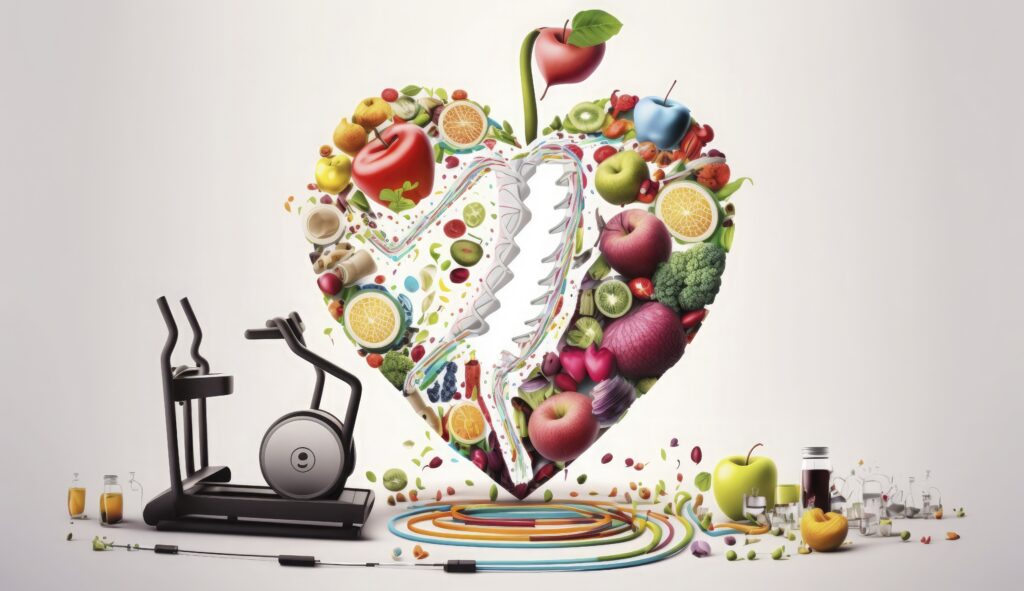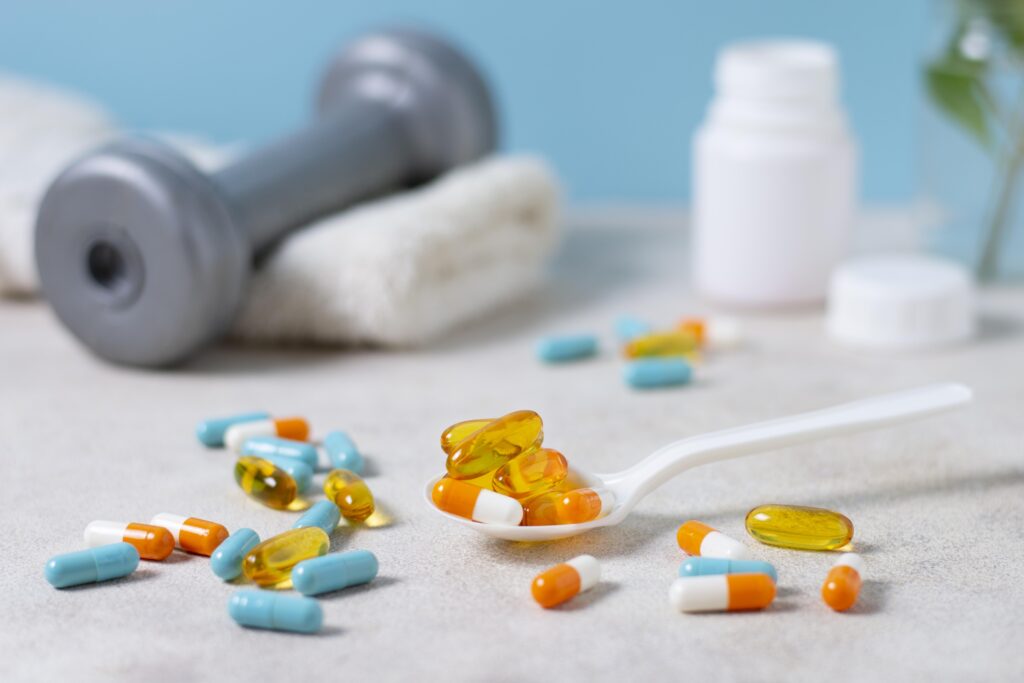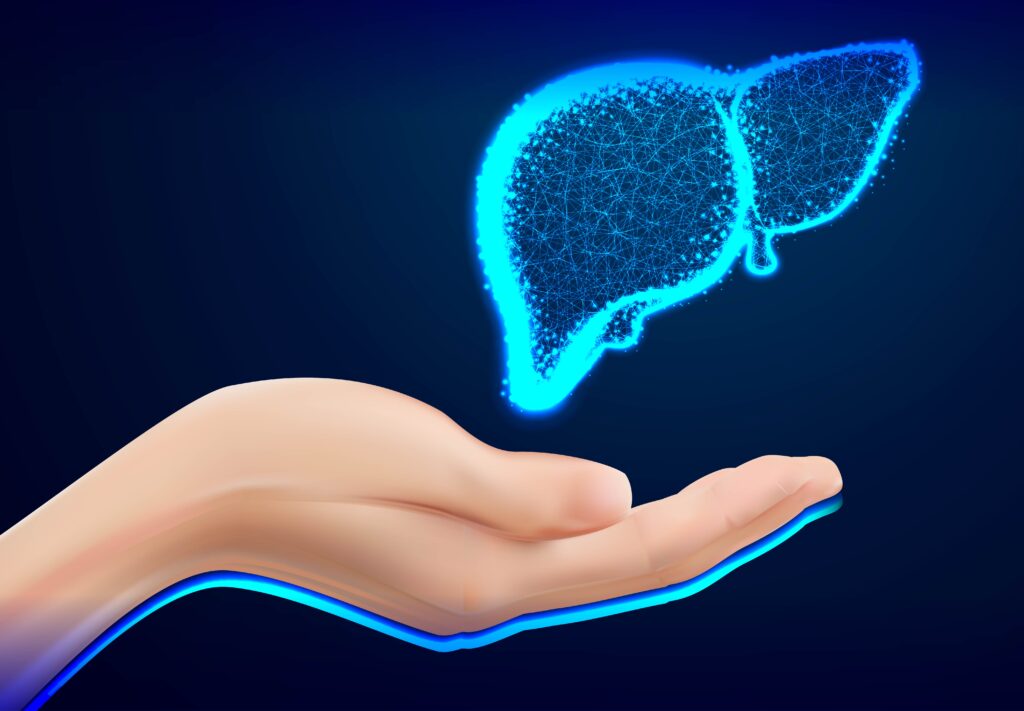Hyperlipidemia refers to an excess of lipids, including cholesterol and triglycerides, in the blood. Specifically, hypercholesterolemia is a subtype characterized by elevated levels of non-HDL cholesterol and LDL (bad) cholesterol. This condition contributes to the accumulation of fatty deposits in arteries, heightening the risk of blockages.
Table of Contents
What is hyperlipidemia and agents involved?
Hyperlipidemia, also referred to as dyslipidemia or elevated cholesterol, indicates an excess of lipids, or fats, in the bloodstream. The liver naturally produces cholesterol for digestion and hormone synthesis, but additional cholesterol comes from the foods you consume, particularly from meat and dairy products. While the liver can generate sufficient cholesterol, the excess from dietary sources can be detrimental.
Having too much cholesterol, with levels ranging from 200 mg/dL to 239 mg/dL considered borderline high and 240 mg/dL considered high, poses health risks by creating obstructions in the arterial pathways through which blood circulates in your body. This can result in organ damage due to insufficient blood supply.
The most perilous form of cholesterol, LDL (bad cholesterol), contributes to the formation of rigid cholesterol deposits, or plaque, within your blood vessels. This hinders the smooth flow of blood, elevating the risk of a stroke or heart attack. The plaque itself may become irritated or inflamed, potentially leading to the formation of a clot and, depending on the location of the blockage, causing a stroke or heart attack.
Imagine cholesterol, a type of fat, as vehicles traveling in lipoprotein cars through your bloodstream.
⦁ Low-density lipoprotein (LDL), dubbed bad cholesterol, acts like a large truck that broke down and is obstructing a traffic lane, potentially clogging your arteries. (Borderline high range: 130 mg/dL to 159 mg/dL. High range: 160 mg/dL to 189 mg/dL.)
⦁ Very low-density lipoprotein (VLDL), also considered bad, carries triglycerides contributing to artery plaque, acting as another type of traffic blocker.
⦁ High-density lipoprotein (HDL), known as good cholesterol, functions like a tow truck that transports cholesterol to your liver for elimination. This process clears the way for your blood to flow through your blood vessels, similar to removing broken-down vehicles from traffic lanes. For HDL, you’d want a number higher than 40 mg/dL.
Is hyperlipidemia common?
Hyperlipidemia is highly prevalent, with 93 million adults in the United States (aged 20 and older) having a total cholesterol count exceeding the recommended limit of 200 mg/dL. More than 50% of American adults are estimated to have elevated LDL levels, and it is suggested that less than 35% of these individuals effectively address and manage their high LDL levels, highlighting the undertreatment of this condition.
Complications of high cholesterol (hyperlipidemia)

Untreated hyperlipidemia (high cholesterol) may lead to the accumulation of plaque inside the blood vessels (atherosclerosis), giving rise to complications such as:
⦁ Heart attack.
⦁ Stroke.
⦁ Coronary heart disease.
⦁ Carotid artery disease.
⦁ Sudden cardiac arrest.
⦁ Peripheral artery disease.
⦁ Microvascular disease.
Causes of hyperlipidemia
Various factors can elevate your susceptibility to hyperlipidemia, such as:
⦁ Having a familial background of elevated cholesterol.
⦁ Suffering from hypothyroidism.
⦁ Dealing with obesity.
⦁ Adopting an inadequate diet.
⦁ Excessive alcohol consumption.
⦁ Living with diabetes.
⦁ Smoking.
Signs and symptoms of Hyperlipidemia
Non-specific indications may involve discomfort in your feet or toes, chest discomfort, difficulty breathing, or breathlessness during physical activity, and confusion or speech difficulties. Nevertheless, hyperlipidemia itself typically doesn’t manifest symptoms but might eventually contribute to other conditions. If it progresses to coronary heart disease (CHD) or atherosclerosis, adults may experience symptoms like chest pain or pressure (angina), blood vessel blockages in the brain and heart, high blood pressure, heart attack, and stroke.
Diagnosis of hyperlipidemia
Diagnosing hyperlipidemia can pose a challenge, mainly due to the absence of noticeable symptoms. Confirmation of a diagnosis requires a healthcare provider, often a primary care physician or ordering physician, to maintain a heightened suspicion for the condition or conduct routine screening labs. Collaborating with nurses becomes crucial in obtaining vital signs, gathering patient history, and enhancing overall patient care.
Following a confirmed diagnosis, effective inter professional communication and teamwork are essential to ensure the patient receives appropriate treatment aligned with the latest treatment guidelines.
A blood test to check cholesterol levels also called a lipid profile usually reports:
⦁ Total cholesterol normal: <200
⦁ LDL cholesterol normal: 100-130
⦁ HDL cholesterol normal: 40-60
⦁ Triglycerides normal: <150
Typically, you’ll need to abstain from eating or drinking anything except water for a period of nine to 12 hours before the test. Keep in mind that certain cholesterol tests may not necessitate fasting, so it’s essential to adhere to your doctor’s specific instructions.
What are the treatment options available for hyperlipidemia?
Managing hyperlipidemia primarily involves addressing it through dietary adjustments, regular physical activity, and weight management. Incorporating beneficial elements like olive oil and nuts has proven effective. Statins are the primary choice for drug treatment. Additional therapeutic options include ezetimibe, bile acid sequestrants, fibrates, and fish oil. It’s important to note that statins may lead to side effects such as myopathies, and recent studies have indicated a heightened risk of developing diabetes mellitus.
Various cholesterol-lowering medications include:
- Bile acid sequestrants or bile acid resins (Colestid®, Questran®, Locholest®, and others).
- Omega-3 fatty acids and fatty acid esters (Epanova®, Lovaza®, and others).
- PCSK9 inhibitors (Praluent®, Repatha®, and Leqvio®).
- Nicotinic acid or niacin (Niacor® and Niaspan®).
- Fibric acid derivatives or fibrates (Tricor®, Lopid®, Antara®, and others).
- Adenosine triphosphate-citrate lyase (ACL) inhibitors (Nexletol® and Nexlizet).
- Selective cholesterol absorption inhibitors (Zetia® and Nexlizet®).
- Statins (Lipitor®, Crestor®, Zocor®, and others).
Your medical professional will engage in a conversation about these alternatives with you, and collaboratively, you can determine the most suitable high-cholesterol medication, if any, for your specific needs.
Natural remedies to treat high cholesterol

Lowering cholesterol naturally may seem challenging, but small steps can make it more manageable. Here are 10 natural strategies to help lower cholesterol:
- Adopt a plant-based diet: A diet rich in fruits, vegetables, nuts, and whole grains can lower LDL cholesterol due to reduced saturated fats.
- Increase fiber intake: Soluble fiber in oats, beans, lentils, fruits, peas, and psyllium can absorb cholesterol and prevent blood sugar spikes.
- Exercise: Both aerobic and resistance training improve cholesterol levels, with moderate to high-intensity exercise benefiting both LDL and HDL cholesterol.
- Manage weight: Even a modest weight loss of 5% can significantly decrease LDL and triglycerides.
- Limit alcohol: Moderate alcohol intake can raise HDL, but excessive drinking may increase triglycerides.
- Stop smoking: Quitting smoking can rapidly improve HDL levels and reverse the negative effects on cholesterol.
- Decrease stress: Stress may increase LDL and triglycerides, so staying active, practicing mindfulness, and maintaining a balanced lifestyle are beneficial.
- Take omega-3: Omega-3 fatty acids from fatty fish, nuts, seeds, and plant oils can reduce triglycerides.
- Manage weight: Even a modest weight loss of 5% can significantly decrease LDL and triglycerides.
- Drink green tea: Green tea with flavonoids may lower LDL cholesterol by over 15%, with a recommended daily limit of 6 to 8 cups.
Remember to consult with your healthcare provider before making significant changes to your diet or lifestyle.
Prevention of hyperlipidemia
You can implement lifestyle adjustments to prevent high cholesterol or lower the risk of developing hyperlipidemia:
- Engage in regular exercise on multiple days each week, if possible.
- Consume a diet with reduced amounts of saturated and trans fats.
- Incorporate a variety of fruits, vegetables, legumes, nuts, whole grains, and fish into your regular diet.
- Restrict the intake of red meat and processed meats such as bacon, sausage, and cold cuts.
- Maintain a weight that aligns with your overall health.
- Include an abundance of healthy fats in your diet, such as avocado, almonds, and olive oil
Familial hyperlipidemia (mixed hyperlipidemia)
Familial combined hyperlipidemia, also known as mixed hyperlipidemia, is an inherited condition that can be passed down from parents or grandparents. It results in elevated levels of both cholesterol and triglycerides in the blood.
Individuals with familial combined hyperlipidemia typically experience heightened cholesterol or triglyceride levels during their teenage years and are diagnosed in their 20s or 30s. This genetic condition amplifies the risk of early development of coronary artery disease and the likelihood of experiencing a heart attack.
In contrast to individuals with typical hyperlipidemia, those with familial combined hyperlipidemia may encounter cardiovascular disease symptoms at an early stage of life. These symptoms can include:
- Chest pain occurring at a young age
- Experiencing a heart attack at a young age
- Cramping in the calves during walking
- Persistent sores on the toes that do not heal properly
- Indications of a stroke, such as difficulty speaking, drooping on one side of the face, or weakness in the extremities
What is ICD 10?
The International Statistical Classification of Diseases and Related Health Problems (ICD) has undergone its 10th revision, leading to the creation of ICD-10 codes. This medical classification list is developed by the World Health Organization (WHO) and serves as a tool to assist healthcare providers in identifying and coding various health conditions. ICD-10 is mandated for use by physicians and healthcare providers under the Health Insurance Portability & Accountability Act (HIPAA), replacing all ICD-9 code sets. Notably, ICD-10 allows for the tracking of a broader range of new diagnoses compared to ICD-9, with expanded code sets like ICD-10-CM comprising over 70,000 codes.
ICD 10 code for hyperlipidemia
The particular ICD-10 code to document hyperlipidemia varies based on the type and severity of the condition. Below are frequently utilized codes:
E78.0 – Pure hypercholesterolemia: This code is employed when there are heightened cholesterol levels in the bloodstream without a notable rise in triglyceride levels.
. E78.00 Pure hypercholesterolemia, unspecified
ii. E78.01 Familial hypercholesterolemia
E78.1 – Pure hyperglyceridemia: This code is utilized when there are heightened levels of triglycerides in the bloodstream without a significant increase in cholesterol levels. It is relevant to:
⦁ Elevated fasting triglycerides
⦁ Endogenous hyperglyceridemia
⦁ Fredrickson’s hyperlipoproteinemia, type IV
⦁ Hyperlipidemia, group B
⦁ Hyperprebetalipoproteinemia
⦁ Very-low-density-lipoprotein-type [VLDL] hyperlipoproteinemia
E78.2 – Mixed hyperlipidemia: This code is applied when there are heightened levels of both cholesterol and triglycerides in the bloodstream.
E78.3 – Hyperchylomicronemia: This code is utilized when there are exceptionally elevated levels of triglycerides, attributed to a deficiency of lipoprotein lipase or other enzymes engaged in lipid metabolism.
E78.4 – Additional hyperlipidemia:
i. E78.41 Heightened Lipoprotein
ii. E78.49 Other instances of hyperlipidemia
E78.4 is utilized when there is a particular form of hyperlipidemia that is not addressed by the aforementioned codes.
Picture credits: vecteezy_sangre-coagulo-o-trombo-bloqueo-el-rojo-sangre-celulas_24533560-blood.jpg




My mother’s brother hai mixed hyperlipidemia. What chances are there that I will also get the disease??
Mixed hyperlipidemia is often influenced by both genetic and environmental factors. The inheritance pattern can be complex, involving multiple genes and interactions with lifestyle choices. If a close family member, such as your mother’s brother, has mixed hyperlipidemia, it may indicate a familial predisposition, but it doesn’t guarantee that you will inherit it.
The risk can vary among individuals, and there’s no fixed percentage chance that you will or will not develop mixed hyperlipidemia. To get a more accurate assessment of your risk, it’s crucial to consult with a healthcare professional or a genetic counselor.